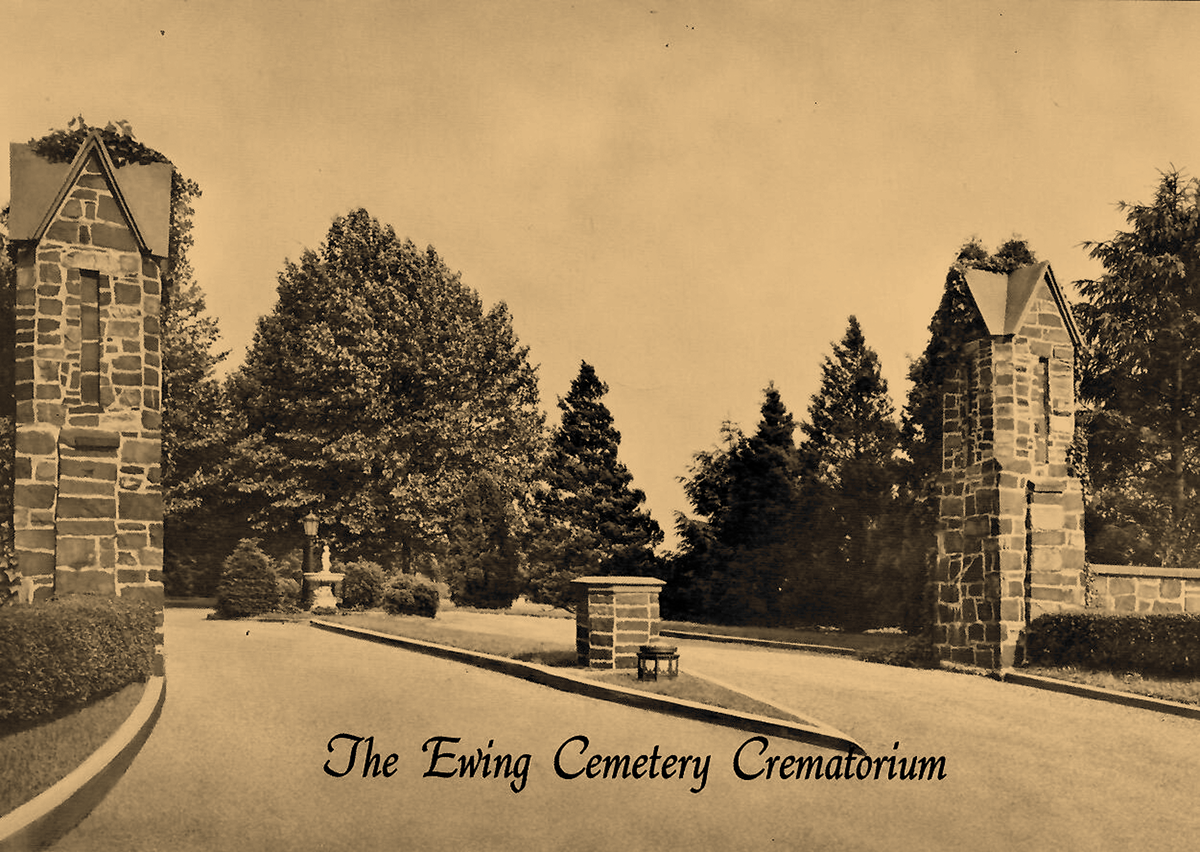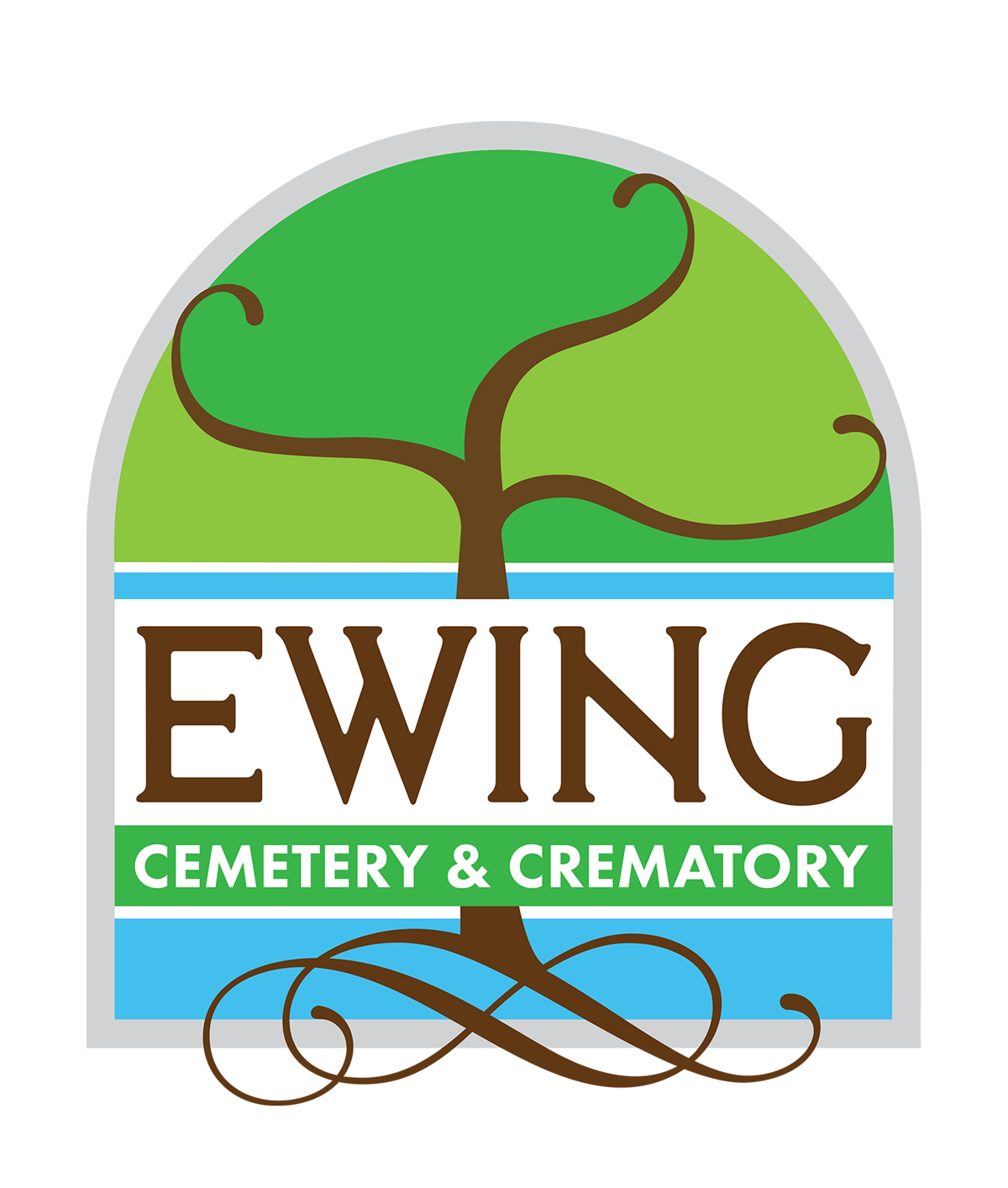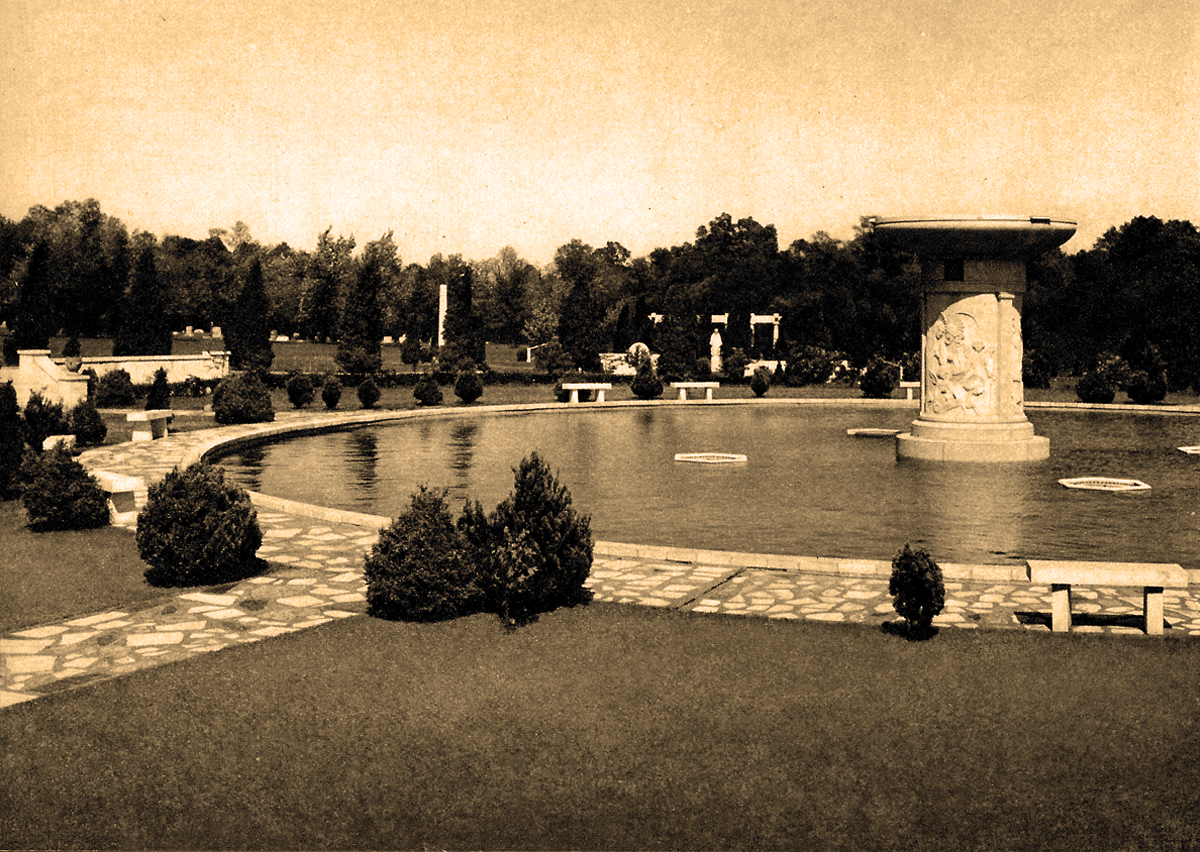
Our Past
It began in 1890 with the tragic death of Dr. John S. Hough’s 18 year old daughter. After purchasing a lot for his daughter at the Ewing Church Dr. Hough thought it would be a noble and profitable idea to open a cemetery. He purchased the farmland across from the church and appropriated 30 acres for his cemetery. The Ewing Cemetery Association was incorporated in 1893. The success of the cemetery was something that Dr. Hough never really saw during his lifetime, despite all of the hard work that he and his family spent to create one of the most unique and beautiful cemeteries in the North East United States.
The main gate circa 1970.
Mr. Arthur S. Hough, Sr. was the son of the cemetery founder and was President from 1918 to 1996.
The Ewing Cemetery was founded and continues to be developed as a unique, peaceful haven for remembering and sheltering those gone surrounded in beauty and nature.
The Flower Corridor.
The main drive into the cemetery looked quite different in days past.
Years of planning and development that continues today brings in unique and artistic landscaping.
The huge Memorial Fountain as it looked then. It is now the site for the new cremation garden coming in the 2020s.
A first of it's kind, graves and memorial placements are placed symmetrically within a formed garden of evergreens and marble memorials.
The Garden of Christ is a unique and singular arrangement of planned memorials which composes a formal garden.
These Garden Crypts were another first of their kind and were nearly sold out in the 1970s.
Water features were, and remain a prominent element of the cemetery to this day.
The solarium was added to enhance the interior environment of peace and reverence.
The main buildings house the main offices and the caretaker's residence.
The Memorial Chapel was, and still is, a place for funerals, services and meditation of all faiths and beliefs.
The interior of the Memorial Chapel.
The first of what would become 3 marble mausolea built to include crypts as well as cremation niches.
Cremations were performed at Ewing Cemetery as early as 1933 when Mr. Hough Sr. installed two retorts. This is an example of a memorial urn placed in a glass front niche.
Bronze plaques in the cremation garden section mark the placement of urns that have been interred, similar to a casket burial.

























